Photographer: Fabrizio Raschetti

Photographer: Fabrizio Raschetti
More Posts from Cybernetics-cyberspace and Others
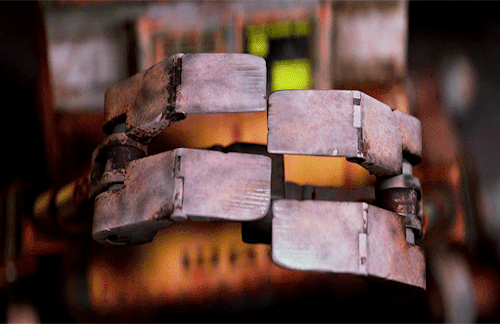
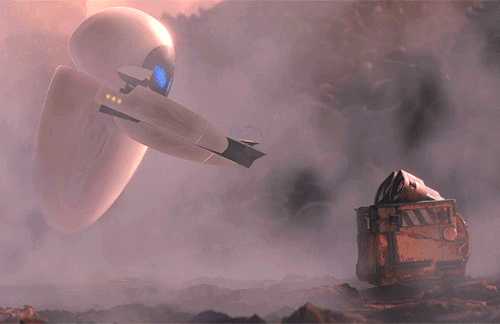
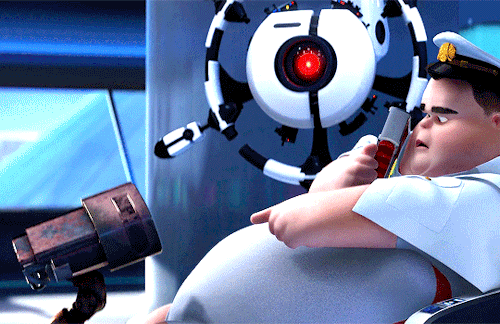
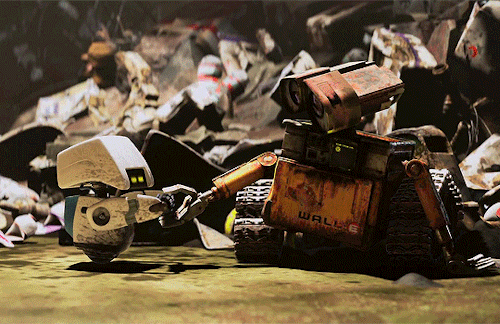
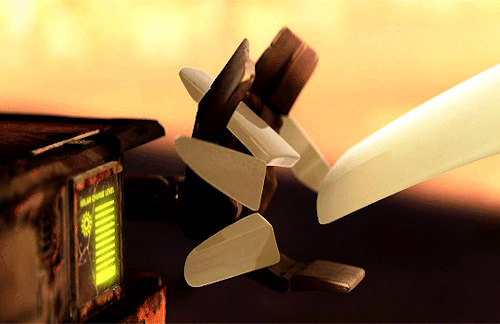
WALL·E (2008) dir. Andrew Stanton







sorry not sorry (credits to @arianwen44 for the artwork)
May the Four Forces Be With You!
May the force be with you? Much to learn you still have, padawan. In our universe it would be more appropriate to say, “May the four forces be with you.”
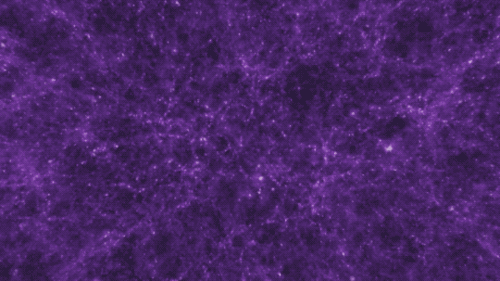
There are four fundamental forces that bind our universe and its building blocks together. Two of them are easy to spot — gravity keeps your feet on the ground while electromagnetism keeps your devices running. The other two are a little harder to see directly in everyday life, but without them, our universe would look a lot different!
Let’s explore these forces in a little more detail.
Gravity: Bringing the universe together

If you jump up, gravity brings you back down to Earth. It also keeps the solar system together … and our galaxy, and our local group of galaxies and our supercluster of galaxies.
Gravity pulls everything together. Everything, from the bright centers of the universe to the planets farthest from them. In fact, you (yes, you!) even exert a gravitational force on a galaxy far, far away. A tiny gravitational force, but a force nonetheless.

Credit: NASA and the Advanced Visualization Laboratory at the National Center for Supercomputing and B. O'Shea, M. Norman
Despite its well-known reputation, gravity is actually the weakest of the four forces. Its strength increases with the mass of the two objects involved. And its range is infinite, but the strength drops off as the square of the distance. If you and a friend measured your gravitational tug on each other and then doubled the distance between you, your new gravitational attraction would just be a quarter of what it was. So, you have to be really close together, or really big, or both, to exert a lot of gravity.
Even so, because its range is infinite, gravity is responsible for the formation of the largest structures in our universe! Planetary systems, galaxies and clusters of galaxies all formed because gravity brought them together.
Gravity truly surrounds us and binds us together.
Electromagnetism: Lighting the way
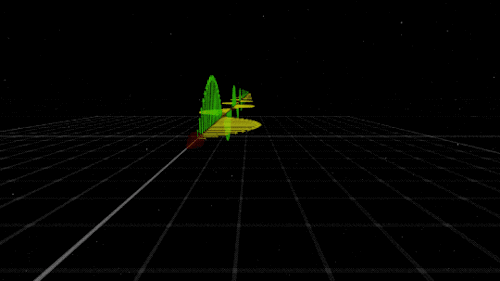
You know that shock you get on a dry day after shuffling across the carpet? The electricity that powers your television? The light that illuminates your room on a dark night? Those are all the work of electromagnetism. As the name implies, electromagnetism is the force that includes both electricity and magnetism.
Electromagnetism keeps electrons orbiting the nucleus at the center of atoms and allows chemical compounds to form (you know, the stuff that makes up us and everything around us). Electromagnetic waves are also known as light. Once started, an electromagnetic wave will travel at the speed of light until it interacts with something (like your eye) — so it will be there to light up the dark places.

Like gravity, electromagnetism works at infinite distances. And, also like gravity, the electromagnetic force between two objects falls as the square of their distance. However, unlike gravity, electromagnetism doesn’t just attract. Whether it attracts or repels depends on the electric charge of the objects involved. Two negative charges or two positive charges repel each other; one of each, and they attract each other. Plus. Minus. A balance.
This is what happens with common household magnets. If you hold them with the same “poles” together, they resist each other. On the other hand, if you hold a magnet with opposite poles together — snap! — they’ll attract each other.
Electromagnetism might just explain the relationship between a certain scruffy-looking nerf-herder and a princess.
Strong Force: Building the building blocks

Credit: Lawrence Livermore National Laboratory
The strong force is where things get really small. So small, that you can’t see it at work directly. But don’t let your eyes deceive you. Despite acting only on short distances, the strong force holds together the building blocks of the atoms, which are, in turn, the building blocks of everything we see around us.
Like gravity, the strong force always attracts, but that’s really where their similarities end. As the name implies, the force is strong with the strong force. It is the strongest of the four forces. It brings together protons and neutrons to form the nucleus of atoms — it has to be stronger than electromagnetism to do it, since all those protons are positively charged. But not only that, the strong force holds together the quarks — even tinier particles — to form those very protons and neutrons.
However, the strong force only works on very, very, very small distances. How small? About the scale of a medium-sized atom’s nucleus. For those of you who like the numbers, that’s about 10-15 meters, or 0.000000000000001 meters. That’s about a hundred billion times smaller than the width of a human hair! Whew.
Its tiny scale is why you don’t directly see the strong force in your day-to-day life. Judge a force by its physical size, do you?
Weak Force: Keeping us in sunshine

If you thought it was hard to see the strong force, the weak force works on even smaller scales — 1,000 times smaller. But it, too, is extremely important for life as we know it. In fact, the weak force plays a key role in keeping our Sun shining.
But what does the weak force do? Well … that requires getting a little into the weeds of particle physics. Here goes nothing! We mentioned quarks earlier — these are tiny particles that, among other things, make up protons and neutrons. There are six types of quarks, but the two that make up protons and neutrons are called up and down quarks. The weak force changes one quark type into another. This causes neutrons to decay into protons (or the other way around) while releasing electrons and ghostly particles called neutrinos.
So for example, the weak force can turn a down quark in a neutron into an up quark, which will turn that neutron into a proton. If that neutron is in an atom’s nucleus, the electric charge of the nucleus changes. That tiny change turns the atom into a different element! Such reactions are happening all the time in our Sun, giving it the energy to shine.
The weak force might just help to keep you in the (sun)light.

All four of these forces run strong in the universe. They flow between all things and keep our universe in balance. Without them, we’d be doomed. But these forces will be with you. Always.
You can learn more about gravity from NASA’s Space Place and follow NASAUniverse on Twitter or Facebook to learn about some of the cool cosmic objects we study with light.
Make sure to follow us on Tumblr for your regular dose of space: http://nasa.tumblr.com
I think the tide pod think was created by someone older than millennials and gen z, just to make gen z look bad
“Are we really listening to the kids who were eating tide pods like a month ago?”
Yes we are. And you know why? Because us KIDS know when to grow up and get serious.
Because us KIDS are starting rallies, writing to are representatives, calling politicians out on their BS.
Because us KIDS are making sure our voices are heard, despite not being old enough to vote.
Because us KIDS are standing united and are willing to have actually conversations, not only about gun control, about other stuff like abortion, LGBT+ rights, racial equality, gender equality, healthcare, education reform, global warming, etc.
Because us KIDS aren’t stubborn adults who are stuck in their ways. We are willing to change, we are willing to help, we are willing to listen.
So yes. We were the kids eating tide pods a month ago, but unlike you adults, we know when it’s time to grow the fuck up and actually do something.
We “kids” are actually standing up to do something because you adults have failed us.

https://bowlroll.net/file/109928 Password Location: http://seiga.nicovideo.jp/seiga/im5981630
Credit 怪獣対若大将P

Rey - Star Wars SixFanarts-4










Solar System: 10 Ways Interns Are Exploring Space With Us
Simulating alien worlds, designing spacecraft with origami and using tiny fossils to understand the lives of ancient organisms are all in a day’s work for interns at NASA.
Here’s how interns are taking our missions and science farther.
1. Connecting Satellites in Space

Becca Foust looks as if she’s literally in space – or, at least, on a sci-fi movie set. She’s surrounded by black, except for the brilliant white comet model suspended behind her. Beneath the socks she donned just for this purpose, the black floor reflects the scene like perfectly still water across a lake as she describes what happens here: “We have five spacecraft simulators that ‘fly’ in a specially designed flat-floor facility,” she says. “The spacecraft simulators use air bearings to lift the robots off the floor, kind of like a reverse air hockey table. The top part of the spacecraft simulators can move up and down and rotate all around in a similar way to real satellites.” It’s here, in this test bed on the Caltech campus, that Foust is testing an algorithm she’s developing to autonomously assemble and disassemble satellites in space. “I like to call it space K’nex, like the toys. We’re using a bunch of component satellites and trying to figure out how to bring all of the pieces together and make them fit together in orbit,” she says. A NASA Space Technology Research Fellow, who splits her time between Caltech and NASA’s Jet Propulsion Laboratory (JPL), working with Soon-Jo Chung and Fred Hadaegh, respectively, Foust is currently earning her Ph.D. at the University of Illinois at Urbana-Champaign. She says of her fellowship, “I hope my research leads to smarter, more efficient satellite systems for in-space construction and assembly.”
2. Diving Deep on the Science of Alien Oceans

Three years ago, math and science were just subjects Kathy Vega taught her students as part of Teach for America. Vega, whose family emigrated from El Salvador, was the first in her family to go to college. She had always been interested in space and even dreamed about being an astronaut one day, but earned a degree in political science so she could get involved in issues affecting her community. But between teaching and encouraging her family to go into science, It was only a matter of time before she realized just how much she wanted to be in the STEM world herself. Now an intern at NASA JPL and in the middle of earning a second degree, this time in engineering physics, Vega is working on an experiment that will help scientists search for life beyond Earth.
“My project is setting up an experiment to simulate possible ocean compositions that would exist on other worlds,” says Vega. Jupiter’s moon Europa and Saturn’s moon Enceladus, for example, are key targets in the search for life beyond Earth because they show evidence of global oceans and geologic activity. Those factors could allow life to thrive. JPL is already building a spacecraft designed to orbit Europa and planning for another to land on the icy moon’s surface. “Eventually, [this experiment] will help us prepare for the development of landers to go to Europa, Enceladus and another one of Saturn’s moons, Titan, to collect seismic measurements that we can compare to our simulated ones,” says Vega. “I feel as though I’m laying the foundation for these missions.”
3. Unfolding Views on Planets Beyond Our Solar System

“Origami is going to space now? This is amazing!” Chris Esquer-Rosas had been folding – and unfolding – origami since the fourth grade, carefully measuring the intricate patterns and angles produced by the folds and then creating new forms from what he’d learned. “Origami involves a lot of math. A lot of people don’t realize that. But what actually goes into it is lots of geometric shapes and angles that you have to account for,” says Esquer-Rosas. Until three years ago, the computer engineering student at San Bernardino College had no idea that his origami hobby would turn into an internship opportunity at NASA JPL. That is, until his long-time friend, fellow origami artist and JPL intern Robert Salazar connected him with the Starshade project. Starshade has been proposed as a way to suppress starlight that would otherwise drown out the light from planets outside our solar system so we can characterize them and even find out if they’re likely to support life. Making that happen requires some heavy origami – unfurling a precisely-designed, sunflower-shaped structure the size of a baseball diamond from a package about half the size of a pitcher’s mound. It’s Esquer-Rosas’ project this summer to make sure Starshade’s “petals” unfurl without a hitch. Says Esquer-Rosas, “[The interns] are on the front lines of testing out the hardware and making sure everything works. I feel as though we’re contributing a lot to how this thing is eventually going to deploy in space.”
4. Making Leaps in Extreme Robotics

Wheeled rovers may be the norm on Mars, but Sawyer Elliott thinks a different kind of rolling robot could be the Red Planet explorer of the future. This is Elliott’s second year as a fellow at NASA JPL, researching the use of a cube-shaped robot for maneuvering around extreme environments, like rocky slopes on Mars or places with very little gravity, like asteroids. A graduate student in aerospace engineering at Cornell University, Elliott spent his last stint at JPL developing and testing the feasibility of such a rover. “I started off working solely on the rover and looking at can we make this work in a real-world environment with actual gravity,” says Elliott. “It turns out we could.” So this summer, he’s been improving the controls that get it rolling or even hopping on command. In the future, Elliott hopes to keep his research rolling along as a fellow at JPL or another NASA center. “I’m only getting more and more interested as I go, so I guess that’s a good sign,” he says.
5. Starting from the Ground Up

Before the countdown to launch or the assembling of parts or the gathering of mission scientists and engineers, there are people like Joshua Gaston who are helping turn what’s little more than an idea into something more. As an intern with NASA JPL’s project formulation team, Gaston is helping pave the way for a mission concept that aims to send dozens of tiny satellites, called CubeSats, beyond Earth’s gravity to other bodies in the solar system. “This is sort of like step one,” says Gaston. “We have this idea and we need to figure out how to make it happen.” Gaston’s role is to analyze whether various CubeSat models can be outfitted with the needed science instruments and still make weight. Mass is an important consideration in mission planning because it affects everything from the cost to the launch vehicle to the ability to launch at all. Gaston, an aerospace engineering student at Tuskegee University, says of his project, “It seems like a small role, but at the same time, it’s kind of big. If you don’t know where things are going to go on your spacecraft or you don’t know how the spacecraft is going to look, it’s hard to even get the proposal selected.”
6. Finding Life on the Rocks

By putting tiny samples of fossils barely visible to the human eye through a chemical process, a team of NASA JPL scientists is revealing details about organisms that left their mark on Earth billions of years ago. Now, they have set their sights on studying the first samples returned from Mars in the future. But searching for signatures of life in such a rare and limited resource means the team will have to get the most science they can out of the smallest sample possible. That’s where Amanda Allen, an intern working with the team in JPL’s Astrobiogeochemistry, or abcLab, comes in. “Using the current, state-of-the-art method, you need a sample that’s 10 times larger than we’re aiming for,” says Allen, an Earth science undergraduate at the University of California, San Diego, who is doing her fifth internship at JPL. “I’m trying to get a different method to work.” Allen, who was involved in theater and costume design before deciding to pursue Earth science, says her “superpower” has always been her ability to find things. “If there’s something cool to find on Mars related to astrobiology, I think I can help with that,” she says.
7. Taking Space Flight Farther

If everything goes as planned and a thruster like the one Camille V. Yoke is working on eventually helps send astronauts to Mars, she’ll probably be first in line to play the Mark Watney role. “I’m a fan of the Mark Watney style of life [in “The Martian”], where you’re stranded on a planet somewhere and the only thing between you and death is your own ability to work through problems and engineer things on a shoestring,” says Yoke. A physics major at the University of South Carolina, Yoke is interning with a team that’s developing a next-generation electric thruster designed to accelerate spacecraft more efficiently through the solar system. “Today there was a brief period in which I knew something that nobody else on the planet knew – for 20 minutes before I went and told my boss,” says Yoke. “You feel like you’re contributing when you know that you have discovered something new.”
8. Searching for Life Beyond Our Solar System

Without the option to travel thousands or even tens of light-years from Earth in a single lifetime, scientists hoping to discover signs of life on planets outside our solar system, called exoplanets, are instead creating their own right here on Earth. This is Tre’Shunda James’ second summer simulating alien worlds as an intern at NASA JPL. Using an algorithm developed by her mentor, Renyu Hu, James makes small changes to the atmospheric makeup of theoretical worlds and analyzes whether the combination creates a habitable environment. “This model is a theoretical basis that we can apply to many exoplanets that are discovered,” says James, a chemistry and physics major at Occidental College in Los Angeles. “In that way, it’s really pushing the field forward in terms of finding out if life could exist on these planets.” James, who recently became a first-time co-author on a scientific paper about the team’s findings, says she feels as though she’s contributing to furthering the search for life beyond Earth while also bringing diversity to her field. “I feel like just being here, exploring this field, is pushing the boundaries, and I’m excited about that.”
9. Spinning Up a Mars Helicopter

Chloeleen Mena’s role on the Mars Helicopter project may be small, but so is the helicopter designed to make the first flight on the Red Planet. Mena, an electrical engineering student at Embry-Riddle Aeronautical University, started her NASA JPL internship just days after NASA announced that the helicopter, which had been in development at JPL for nearly five years, would be going to the Red Planet aboard the Mars 2020 rover. This summer, Mena is helping test a part needed to deploy the helicopter from the rover once it lands on Mars, as well as writing procedures for future tests. “Even though my tasks are relatively small, it’s part of a bigger whole,” she says.
10. Preparing to See the Unseen on Jupiter’s Moon Europa

In the 2020s, we’re planning to send a spacecraft to the next frontier in the search for life beyond Earth: Jupiter’s moon Europa. Swathed in ice that’s intersected by deep reddish gashes, Europa has unveiled intriguing clues about what might lie beneath its surface – including a global ocean that could be hospitable to life. Knowing for sure hinges on a radar instrument that will fly aboard the Europa Clipper orbiter to peer below the ice with a sort of X-ray vision and scout locations to set down a potential future lander. To make sure everything works as planned, NASA JPL intern Zachary Luppen is creating software to test key components of the radar instrument. “Whatever we need to do to make sure it operates perfectly during the mission,” says Luppen. In addition to helping things run smoothly, the astronomy and physics major says he hopes to play a role in answering one of humanity’s biggest questions. “Contributing to the mission is great in itself,” says Luppen. “But also just trying to make as many people aware as possible that this science is going on, that it’s worth doing and worth finding out, especially if we were to eventually find life on Europa. That changes humanity forever!”
Read the full web version of this week’s ‘Solar System: 10 Things to Know” article HERE.
Make sure to follow us on Tumblr for your regular dose of space: http://nasa.tumblr.com.










-
 dotglobal liked this · 11 months ago
dotglobal liked this · 11 months ago -
 monizm reblogged this · 1 year ago
monizm reblogged this · 1 year ago -
 lunamothghost reblogged this · 1 year ago
lunamothghost reblogged this · 1 year ago -
 ihavebrainworms reblogged this · 1 year ago
ihavebrainworms reblogged this · 1 year ago -
 lumilipas liked this · 1 year ago
lumilipas liked this · 1 year ago -
 lunamothghost liked this · 1 year ago
lunamothghost liked this · 1 year ago -
 yawnn reblogged this · 1 year ago
yawnn reblogged this · 1 year ago -
 fexlucia reblogged this · 1 year ago
fexlucia reblogged this · 1 year ago -
 thevampqueen reblogged this · 1 year ago
thevampqueen reblogged this · 1 year ago -
 dalgonamilk reblogged this · 1 year ago
dalgonamilk reblogged this · 1 year ago -
 robotgraffiti reblogged this · 1 year ago
robotgraffiti reblogged this · 1 year ago -
 robotgraffiti liked this · 1 year ago
robotgraffiti liked this · 1 year ago -
 royal-canadian-blended liked this · 1 year ago
royal-canadian-blended liked this · 1 year ago -
 exuniceja reblogged this · 1 year ago
exuniceja reblogged this · 1 year ago -
 exuniceja liked this · 1 year ago
exuniceja liked this · 1 year ago -
 baddreams-nicenightmares reblogged this · 1 year ago
baddreams-nicenightmares reblogged this · 1 year ago -
 heartbreakhotelsuite505 reblogged this · 1 year ago
heartbreakhotelsuite505 reblogged this · 1 year ago -
 aikeaguineamp3 liked this · 1 year ago
aikeaguineamp3 liked this · 1 year ago -
 riarnu reblogged this · 1 year ago
riarnu reblogged this · 1 year ago -
 riarnu liked this · 1 year ago
riarnu liked this · 1 year ago -
 hxhloveclub reblogged this · 1 year ago
hxhloveclub reblogged this · 1 year ago -
 hxhloveclub liked this · 1 year ago
hxhloveclub liked this · 1 year ago -
 jetstream-sam reblogged this · 1 year ago
jetstream-sam reblogged this · 1 year ago -
 rholsof-film reblogged this · 1 year ago
rholsof-film reblogged this · 1 year ago -
 tortellin0 reblogged this · 1 year ago
tortellin0 reblogged this · 1 year ago -
 esotericpluto reblogged this · 1 year ago
esotericpluto reblogged this · 1 year ago -
 tortellin0 liked this · 1 year ago
tortellin0 liked this · 1 year ago -
 yawnn liked this · 1 year ago
yawnn liked this · 1 year ago -
 hyunzinwolf reblogged this · 1 year ago
hyunzinwolf reblogged this · 1 year ago -
 despicablebisexual liked this · 1 year ago
despicablebisexual liked this · 1 year ago -
 esotericpluto liked this · 1 year ago
esotericpluto liked this · 1 year ago -
 hammerofspace reblogged this · 1 year ago
hammerofspace reblogged this · 1 year ago -
 hammerofspace liked this · 1 year ago
hammerofspace liked this · 1 year ago -
 hugovlad reblogged this · 1 year ago
hugovlad reblogged this · 1 year ago -
 krimzonkyz reblogged this · 1 year ago
krimzonkyz reblogged this · 1 year ago -
 errorcode000 reblogged this · 1 year ago
errorcode000 reblogged this · 1 year ago -
 krimzonkyz liked this · 1 year ago
krimzonkyz liked this · 1 year ago -
 playaplayastudios liked this · 2 years ago
playaplayastudios liked this · 2 years ago -
 enjoy-yourstay reblogged this · 2 years ago
enjoy-yourstay reblogged this · 2 years ago -
 malamatinakoka liked this · 2 years ago
malamatinakoka liked this · 2 years ago -
 leafarr reblogged this · 3 years ago
leafarr reblogged this · 3 years ago -
 bricklaflair reblogged this · 3 years ago
bricklaflair reblogged this · 3 years ago -
 tenbeersafter reblogged this · 3 years ago
tenbeersafter reblogged this · 3 years ago -
 meres-san-autes reblogged this · 3 years ago
meres-san-autes reblogged this · 3 years ago -
 ashalvar reblogged this · 3 years ago
ashalvar reblogged this · 3 years ago
Lv.20 / he/they INTP/INFP Space Enthusiast --Don't follow me or interact if you have an inappropriate blog / my talking is tagged Cyberpiko speaks
114 posts